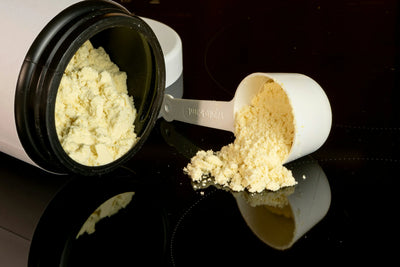Introduction
Dogs are man's most loyal companions, warming our lives with their unconditional love. However, when they develop a chronic metabolic disease like diabetes, it can leave their owners feeling overwhelmed. Diabetes mellitus in dogs is a disease caused by insufficient insulin production or decreased cellular responsiveness to insulin, resulting in a persistent elevation of blood sugar.
Diabetes in Dogs: Symptoms to Watch For & Next Steps
If not detected and treated in time, it may lead to serious complications and even life-threatening. Fortunately, through careful observation, timely diagnosis and scientific management, dogs can still have a healthy and happy life. In this article, we will provide you with a detailed analysis of the symptoms, diagnosis methods and treatment suggestions of diabetes in dogs to help you take better care of your furry children.

1. Symptoms of Diabetes in Dogs: Health Alerts in Subtle Changes
Symptoms of diabetes in dogs often appear quietly and can be mistaken for “normal aging” or minor problems. Here are some key signals that owners need to pay extra attention to.
(1) Drinking and urinating: the body's distress signal
Drinking and urinating is the most common early symptom of diabetes in dogs. Due to elevated blood sugar, the kidneys are unable to fully reabsorb glucose and the sugar content in the urine increases, triggering an osmotic diuretic effect. Your dog may run to the water bowl frequently to drink, urinate significantly more, and may even become “incontinent” in the house. If your dog suddenly starts asking to go outside to urinate more often, or if there is a surge in the use of pads, this may be an important health warning.
(2) Eating more but losing weight faster: unusual appetite and weight changes
Some dogs will show abnormal hunger, wolfing down food from their bowls or even stealing other food, but continue to lose weight. This is because the body is unable to utilize glucose efficiently due to insulin deficiency, and cellular “starvation” forces the body to break down fat and muscle to provide energy. This not only makes the dog become thin, but also may lead to muscle loss and appear weak.
(3) Mental depression: from active to lethargic
While healthy dogs are usually enthusiastic about going for walks and playing, diabetic dogs can look tired due to impaired energy metabolism. They may be reluctant to go outside, lie motionless in a corner, and not even be interested in their favorite toys or snacks. In severe cases, dogs may be lethargic and unresponsive, like they have lost their old energy.
(4) Coat and Skin Problems: External Health Warnings
Diabetes can affect your dog's skin and coat health. The coat of a dog with the disease may become dry and lackluster, shedding easily, or even experiencing localized hair loss. Dry Skin may also become dry and lack elasticity, making it susceptible to infections such as redness, swelling, itching or stubborn dermatitis. These changes not only affect your dog's appearance, but may also make them feel uncomfortable.
(5) Recurrent infections: the invisible crisis of immunity
High blood sugar can weaken your dog's immune system, making them more susceptible to infections. Common infections include urinary tract infections (manifested by frequent urination, difficulty urinating or even bloody urine), skin infections (redness, swelling, ulcers or chronic dermatitis), and oral infections (gingivitis, severe bad breath). If you notice these problems recurring in your dog, diabetes may be at work.
(6) Loss of vision: the threat of cataracts
Chronic high blood sugar can lead to cataracts, a gradual clouding of your dog's eye lens and loss of vision. You may notice that your dog bumps into furniture, walks hesitantly or is unresponsive to visual signals such as hand signals. According to statistics, about 80% of diabetic dogs will develop cataracts of varying degrees within a year of onset, seriously affecting the quality of life.
(7) Serious complications: danger signals that should not be ignored
If diabetes is not effectively controlled, it may lead to life-threatening complications such as ketoacidosis. Symptoms include vomiting, diarrhea, shortness of breath (with an acetone odor similar to rotten apples), and severe dehydration. In addition, prolonged hyperglycemia can lead to neuropathy, which manifests as weakness in the hind limbs, muscle atrophy, or slow response to painful stimuli. Once these symptoms appear, the condition has become very serious and requires immediate medical attention.
2. How to Diagnose Diabetes in Dogs: Scientific Testing is Key?
If you observe any of the above symptoms, it is vital to take your dog to the vet as soon as possible. The following are common diagnostic methods:
(i) Blood glucose testing: Getting to the heart of the matter
Blood glucose testing is the basis for diagnosing diabetes. Veterinarians usually perform fasting and post-meal blood glucose tests. A fasting blood glucose level above 180 mg/dL usually indicates possible diabetes. Persistently high blood sugar is a key indicator of a definitive diagnosis.
(ii) Urinalysis: revealing hidden clues
Routine urine tests detect glucose and ketone bodies in the urine. The urine of diabetic dogs usually contains glucose, which is due to high blood sugar exceeding the kidney's ability to process it. In addition, the presence of ketone bodies in the urine may indicate the risk of ketoacidosis.
(iii) Fructosamine test: Understanding long-term blood sugar control
The fructosamine test reflects your dog's average blood glucose level over the past 2-3 weeks. This not only helps to confirm the diagnosis of diabetes mellitus, but also provides a basis for monitoring the effectiveness of subsequent treatment.

(iv) Comprehensive physical examination: to rule out other possibilities
Symptoms of diabetes may overlap with other diseases (e.g. kidney disease, liver disease), so a thorough physical examination is essential. Your veterinarian will assess your dog's overall health through routine blood and biochemical tests to rule out other potential diseases.
3. Treatment and Management of Diabetes Mellitus in Dogs: Getting Your Favorite Pet Back to Health
After the diagnosis of diabetes, scientific management and treatment can significantly improve your dog's quality of life. The following are the main treatment recommendations:
(1) Insulin therapy: core intervention
Insulin injection is the mainstay of treatment for diabetes mellitus in dogs and usually requires twice daily subcutaneous injections. Veterinarians will adjust the dosage according to the dog's weight, blood glucose level and individual differences. Owners need to learn to inject insulin correctly and review regularly to ensure the dose is appropriate.
(2) Dietary management: change from the table
Proper diet is the key to controlling diabetes. Here are some suggestions:
High-fiber diet: High-fiber prescription food can slow down blood sugar fluctuation and stabilize the condition.
Regular feeding: Feed at a fixed time every day to avoid over or under feeding and ensure stable blood glucose.
(3) Moderate Exercise: Activate the body's vitality
Moderate exercise (e.g. daily walks or light play) can help control weight and improve insulin sensitivity. However, excessive exercise should be avoided to avoid triggering hypoglycemia. Exercise programs should be developed in consultation with your veterinarian.
(4) Regular blood glucose monitoring: Keeping track of your dog's health status
Regular monitoring of your dog's blood glucose level using a home blood glucose meter can help owners and veterinarians make timely adjustments to the treatment program. Recording the results of each measurement and forming a blood glucose curve can help optimize management.
(5) Managing complications: preventing and preventing them
Diabetes mellitus may cause complications such as cataracts and infections, which need to be treated promptly. For example, urinary tract infections may require antibiotic treatment, and cataracts may require surgical evaluation in severe cases.
Although diabetes in dogs is a chronic disease, it is entirely possible for your dog to live a full life through careful observation and scientific management. Keeping an eye out for symptoms such as excessive drinking and urination, hyper appetite but weight loss, and depression, and timely blood glucose testing and routine urinalysis are key to early detection. After diagnosis, insulin therapy, dietary management, moderate exercise and regular monitoring will be the “weapons” you and your dog will use to face the disease together. If you find any abnormality in your dog, don't delay, consult a professional veterinarian as soon as possible to get the best treatment for your fur child.
With love and responsibility, let's accompany your dog to walk through every day of health!
Diabetic Dog Won’t Eat? 8 Tricks to Stimulate Their Appetite
As a dog owner, it's always heartbreaking and worrying to see your fur child lose interest in their food bowl. Especially for dogs with diabetes, a loss of appetite not only affects blood sugar control, but can also lead to malnutrition and even make their health worse. Appetite problems in diabetic dogs can be caused by a number of things, such as blood sugar fluctuations, digestive discomfort, or simply picky eating. Fortunately, with a few simple but effective methods, we can rekindle our dog's passion for food. In this article, we've compiled a list of 8 practical tricks to help your dog get back into the groove of eating, while ensuring their health is properly managed.
1. Adjust the Temperature of the Food: Give the Bowl a Tempting Aroma
The temperature of the food has a great impact on your dog's sense of smell and appetite, and proper adjustments can make your dog interested in the food bowl again.
(1) Warm the food to awaken the taste buds
Warming the food slightly to a lukewarm state (about body temperature level, around 37℃) can release the aroma of the food and stimulate your dog's sense of smell and taste. You can try soaking the dry food in warm water for a few minutes or heating the wet food in the microwave for 10-15 seconds (be careful not to overheat it so as not to burn your dog). Warm food is not only more appealing, it is also easier to digest and friendlier to your diabetic dog's gut.

(2) Say goodbye to cold food
Cold or frozen food fresh from the fridge can be a turn-off for your dog. Not only is the cold texture unappealing, but it can also trigger gastrointestinal distress, especially in diabetic dogs, and may further suppress appetite. Ensure that food is brought back to room temperature or warmed slightly before feeding to make your dog more comfortable eating.
2. Try Different Food Types: Give Your Taste Buds a Little Freshness
A single food may bore your dog, a change of flavor may stimulate their interest.
(1) The appeal of wet food
Compared with dry food, wet food is usually more flavorful and tasty, which can attract picky eaters. The high moisture content of wet food not only helps to hydrate your dog, but also reduces the digestive burden. You can choose low-sugar, high-fiber wet food designed for diabetic dogs, or mix wet food with dry food to add layers of texture and slowly transition to a suitable dietary ratio.
(2) The temptation of homemade food
Homemade food can bring freshness and the warmth of home to your dog. You can try simple recipes such as cooked chicken breast, pumpkin puree and oatmeal with a small amount of low-fat yogurt. These ingredients are not only nutritionally balanced, but also offer different textures and flavors. However, be sure to consult your veterinarian to ensure that homemade recipes meet the nutritional needs of your diabetic dog.
3. Adding Healthy Flavorings: The Magic of Sprucing Up Your Food
A little bit of tasty “magic” can make dog food more appealing, but ensure it is safe and healthy.
(1) Low-sodium broth aroma
Adding a small amount of low-sodium chicken or beef broth to your dog's food can instantly enhance the flavor and entice your dog to start eating. Broth also hydrates and helps maintain the water balance of diabetic dogs. Be careful to choose broths without salt or additives to avoid extra burden on blood sugar or kidneys.
(2) A dash of natural spices
A small amount of natural spice, such as ground cinnamon or ground turmeric, not only enhances the aroma of the food, but may also provide health benefits, such as anti-inflammatory or digestive enhancement. All you need to do is add a small pinch at a time and sprinkle it evenly over the food. It's best to consult your veterinarian before use to ensure the spice is right for your dog.
4. Increase Food Appeal: Small Details Make a Big Difference
Make your dog more excited about eating by adjusting the way you feed him.
(1) Small portions, multiple feedings
Large portions of food may stress your diabetic dog and affect his appetite. Try dividing the day's food into 4-5 smaller feedings, a small amount at a time but more frequently. This will not only reduce your dog's satiety, but it will also make them look forward to each feeding while helping to stabilize blood sugar.
(2) The lure of high protein
High protein foods are usually more popular with dogs, such as chicken, turkey or fish. Not only do these ingredients taste delicious, but they also provide plenty of nutrients to meet your dog's energy needs. Choosing a high-quality protein source with high-fiber ingredients ensures that it is both tasty and suitable for diabetes management.
5. Create a Comfortable Eating Environment: Make Eating a Pleasure
A pleasant eating environment can greatly enhance your dog's appetite.
(1) Quiet Dining Corner
A noisy or disturbed environment may make your dog feel nervous, resulting in a loss of appetite. Prepare a quiet and comfortable eating space for your dog, away from noise and disturbance. Put clean utensils and soft mats so that your dog can enjoy the food in a relaxed state.
(2) Regular feeding time
Regular feeding time can help your dog form a stable eating habit. Feeding at a fixed time every day not only allows the dog's digestive system to adapt to the regularity, but also allows them to look forward to the “meal time” and reduce picky eating behavior.
6. Exercise: Keep Your Dog Hungry
Exercise not only helps control your diabetic dog's weight and blood sugar, it also naturally stimulates the appetite. Taking your dog for a moderate darn near 30-minute walk or light play every day can help burn energy and increase hunger. After exercise, dogs are usually more willing to eat. However, be careful to avoid over-exercising to avoid triggering hypoglycemia.
7. Try Appetite Stimulants: Improving Appetite from the Inside Out
Some supplements can help regulate your dog's digestion and appetite, but should be used under veterinary supervision.
(1) Probiotics to support digestion
Probiotics can improve your dog's gut health and boost digestion, which in turn boosts appetite. Choosing a probiotic product designed for dogs and adding it to food as directed may make your dog more interested in food.
(2) Vitamin B complex boost
Vitamin B complex helps boost your dog's energy levels and appetite. Adding vitamin B complex supplements in moderation, as recommended by your veterinarian, may help dogs with loss of appetite.
8. Consult Your Veterinarian in a Timely Manner: Professional Guidance is Indispensable
If your dog still refuses to eat after trying the above methods, it may be a sign of poorly controlled diabetes or other health problems. Loss of appetite can be related to blood sugar fluctuations, infections or other illnesses. Take your dog to the veterinarian as soon as possible for a thorough examination to determine the underlying cause and get targeted treatment recommendations. Your veterinarian may be able to adjust the insulin dosage or recommend other therapies to ensure your dog's health.
Loss of appetite in diabetic dogs is a problem that needs to be taken seriously, but by adjusting the temperature of food, trying different types of food, adding healthy condiments, optimizing feeding practices, providing a comfortable environment, adding the right amount of exercise, and using a probiotic or B-complex vitamins, owners can effectively stimulate their dog's appetite. These tips will not only help your dog fall in love with eating again, but will also help them better manage their diabetes and stay healthy. If the problem persists, timely consultation with your veterinarian is key. Your careful companionship and scientific management will lead to a healthier and happier life for your dog!
Safe Snacks for Diabetic Dogs: Vet-Recommended Treats & Portion Tips
For dogs with diabetes, snacks are more than just a small reward, they are an important part of their health. The right snacks can bring your dog pleasure and nutrition while helping to stabilize blood sugar and prevent the condition from worsening. However, the wrong snack choice can trigger blood sugar fluctuations and even exacerbate health problems. How can you guard your dog's health while satisfying their taste buds? In this article, we will introduce you to veterinarian-recommended Safe and Healthy snacks as well as scientific feeding advice, so that your furry children can enjoy the flavor and stay healthy at the same time.
1. Veterinarian-recommended Safe Snacks: Nutritious and Delicious at the Same Time
Snacks for diabetic dogs need to be low in sugar, low in fat, and high in fiber to support blood sugar management and overall health. Here are a few suitable snack choices that balance taste and nutrition.
(1) Vegetables: A refreshing and healthy natural choice
Vegetables are ideal snacks for dogs with diabetes. Low in calories and high in fiber, they help stabilize blood sugar while providing a rich source of vitamins and minerals.
Carrots: Crunchy sweet carrots are a “natural chew stick” for dogs, low in sugar and high in fiber, which not only promotes intestinal health, but also helps clean teeth. Cut into small chunks or strips, it's perfect as a training reward.
Broccoli: Broccoli is rich in vitamins C and K, low in calories and contains no sugar. Steamed and cut into small pieces, it is safe and easy to digest.
Green beans: Green beans are rich in fiber and slow down the rise of blood sugar, making them suitable for occasional feeding. Cooked and cooled, they make a refreshing snack.
Pumpkin: Pumpkin is a “star snack” for diabetic dogs, rich in fiber and antioxidants that help regulate blood sugar. Steamed and mashed or cut into small pieces to feed, the dog usually love to eat.
(2) Fruits: a sweet touch in moderation
Although fruits are delicious, they are relatively high in sugar and need to be carefully selected and strictly controlled.
Blueberries: Rich in antioxidants and low in sugar, blueberries are a good snack for diabetic dogs. You can feed 3-5 at a time to satisfy your palate without affecting your blood sugar.
Apples: Peeled and cored apples are rich in fiber and vitamin C and have a crisp taste. However, due to the slightly high sugar content, it is recommended to feed 1-2 small pieces per week and do not overdo it.
(3) Meat: A delicious temptation with high protein
Meat snacks meet your dog's protein needs while providing a tasty treat, making them an excellent choice for training or rewarding.
Chicken: Cooked skinless chicken breast is low in fat and high in protein, making it suitable for diabetic dogs. Cut into small pieces or shredded, it's safe and delicious.
TURKEY: Similar to chicken, turkey meat is low in fat and high in protein, making it suitable for snacking. Ensure that it is cooked without seasoning and oil to keep it healthy.
(4) Other healthy choices: Diversify your nutritional supplements
Low-fat cheese: Low-fat cheese is rich in calcium and protein, and feeding it in moderation can satisfy your dog's taste buds. However, choose salt-free, low-fat varieties and give only a small piece at a time to prevent excessive calories.
Homemade snacks: Homemade snacks give owners complete control over the ingredients, such as making small cookies with chicken, pumpkin and oats. Not only are such snacks fresh, but they can also be customized to suit your dog's tastes and health needs.
2. Notes on Snack Feeding: Scientific Management, Health First
Choosing the right Snack Feeding is only the first step, the right way of feeding is equally important. Here are some key considerations to help you feed your dog scientifically and guard its health.
(1) Stay away from high-sugar foods: the “invisible killer” of blood glucose
High-sugar snacks (such as sugary cookies, desserts or certain dried fruits) can cause your dog's blood sugar to spike quickly, which is not good for your diabetic dog's health. Double-check the ingredient list of snacks and avoid treats that contain syrup, honey or artificial sweeteners. Even for “natural” fruits, choose low-sugar varieties and control the amount.

(2) Prioritizing low-fat snacks: controlling weight and reducing burden
Obesity is the enemy of diabetic dogs and may aggravate insulin resistance and risk of complications. Choosing low-fat snacks, such as lean meats or low-fat cheeses, can effectively control calorie intake and help your dog maintain a healthy weight. Avoid greasy meat or high-fat dairy products, which may increase gastrointestinal burden.
(3) Strictly control the amount of snacks: small amount and multiple times are safer
Even for healthy Snack Feeding, overfeeding may lead to blood sugar fluctuation or weight gain. Veterinarians recommend that the calories of snacks should be controlled at less than 10% of the dog's total daily calories. For example, if your dog needs 800 calories per day, snacks should have no more than 80 calories. Smaller portions and multiple feedings can be used to meet your dog's expectations while avoiding overdose.
(4) Consult your veterinarian: a personalized plan for greater peace of mind
Each dog's health and diabetes control is different, and snack choices need to be individualized for each dog. Before introducing new snacks, make sure to consult your veterinarian to confirm that they are suitable for your dog's body type and condition. Your veterinarian may recommend specific Snack Feeding or frequency of Snack Feeding based on your dog's blood sugar levels, weight, and complications.
Choosing snacks for your diabetic dog is an art that requires care and science. Low-sugar, high-fiber vegetables (e.g., carrots, broccoli, squash), moderate amounts of low-sugar fruits (e.g., blueberries), high-protein lean meats (e.g., chicken, turkey), as well as low-fat cheeses and homemade snacks are all safe and tasty choices. By avoiding high-sugar, high-fat foods, strictly controlling the amount of Snack Feeding, and providing a comfortable feeding environment, you can keep your dog's blood sugar stable and healthy while enjoying treats.
Talking to your veterinarian is a critical step before trying any new snacks. They can provide you with personalized recommendations to ensure that the snack not only satisfies your dog's taste buds, but also aids in disease management. Let's enjoy each day of happiness with your diabetic dog with scientific feeding practices and lots of love!





